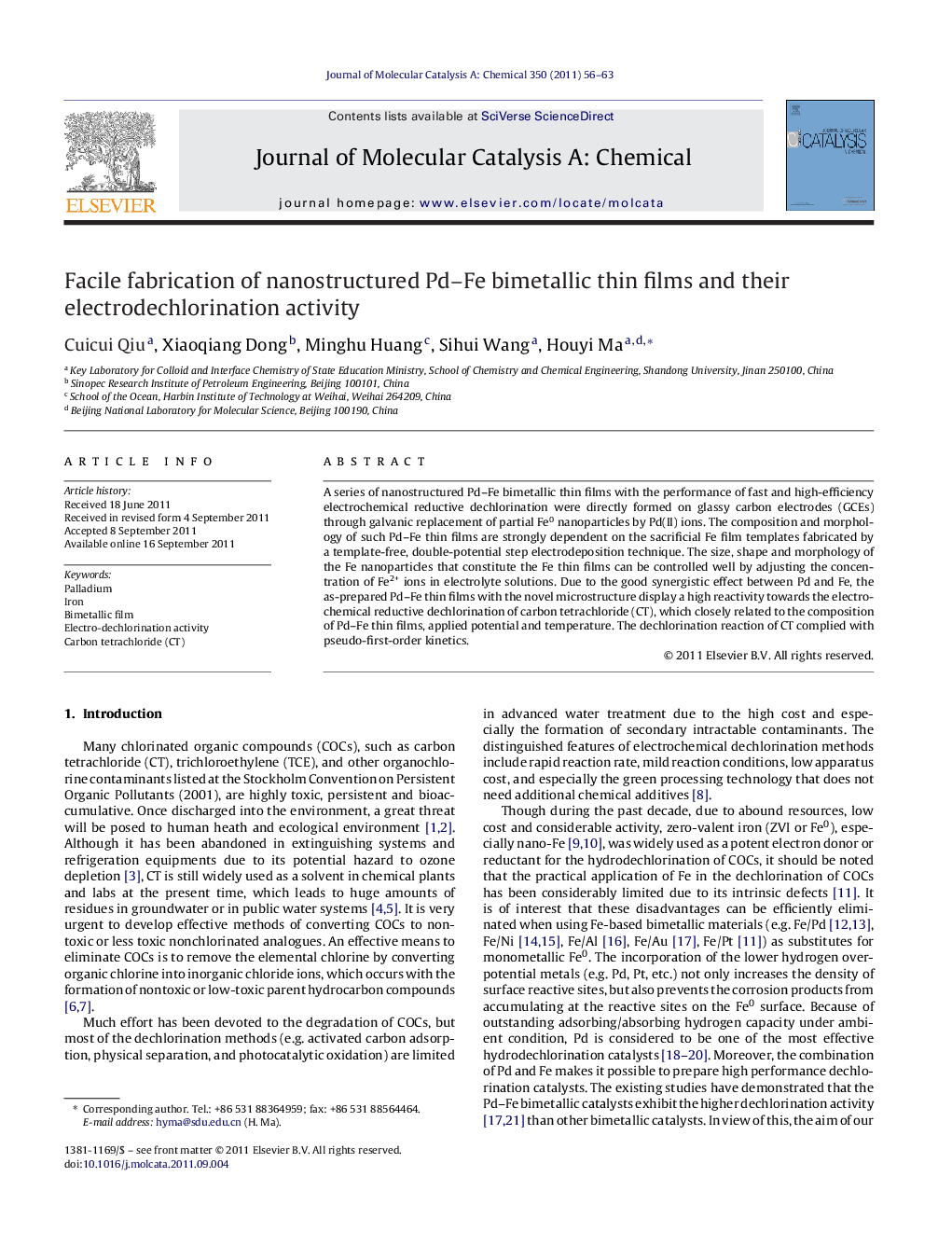| کد مقاله | کد نشریه | سال انتشار | مقاله انگلیسی | نسخه تمام متن |
|---|---|---|---|---|
| 66351 | 48427 | 2011 | 8 صفحه PDF | دانلود رایگان |

A series of nanostructured Pd–Fe bimetallic thin films with the performance of fast and high-efficiency electrochemical reductive dechlorination were directly formed on glassy carbon electrodes (GCEs) through galvanic replacement of partial Fe0 nanoparticles by Pd(II) ions. The composition and morphology of such Pd–Fe thin films are strongly dependent on the sacrificial Fe film templates fabricated by a template-free, double-potential step electrodeposition technique. The size, shape and morphology of the Fe nanoparticles that constitute the Fe thin films can be controlled well by adjusting the concentration of Fe2+ ions in electrolyte solutions. Due to the good synergistic effect between Pd and Fe, the as-prepared Pd–Fe thin films with the novel microstructure display a high reactivity towards the electrochemical reductive dechlorination of carbon tetrachloride (CT), which closely related to the composition of Pd–Fe thin films, applied potential and temperature. The dechlorination reaction of CT complied with pseudo-first-order kinetics.
Figure optionsDownload high-quality image (165 K)Download as PowerPoint slideHighlights
► Developing a facile electrodeposition technique for fabricating Fe nano-films.
► Fabrication of nanostructured Pd–Fe thin films via a galvanic replacement reaction.
► Composition, morphology and microstructure of the Pd–Fe films can be controlled.
► Pd–Fe nano-catalysts exhibit very high activity for the CT dechlorination.
► Distinguishing the dechlorination activity of different types of hydrogen.
Journal: Journal of Molecular Catalysis A: Chemical - Volume 350, Issues 1–2, 1 November 2011, Pages 56–63